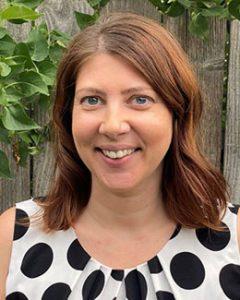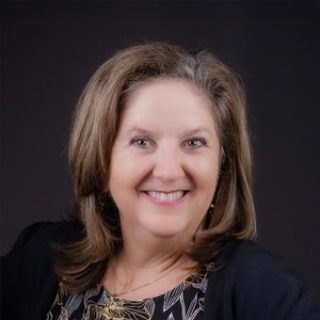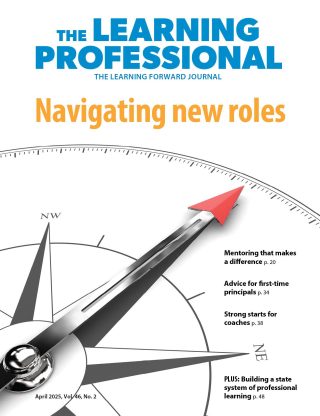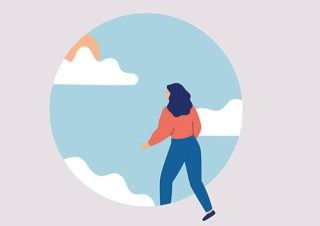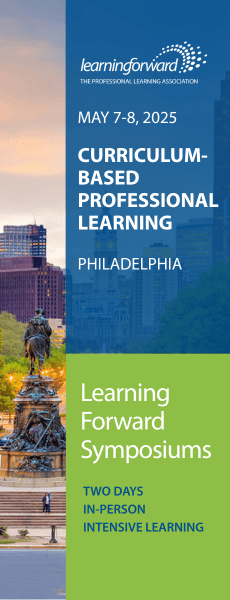FOCUS
Putting multilingual students at the center of curriculum-based professional learning
By Casey McAlduff and Lyn Westergard
October 2024
In a district office on a too-hot Saturday and already a few weeks into their summer break, four teachers are huddled around a piece of chart paper, each holding a different colored marker. They’ve been reading and discussing Sandra Cisneros’ book, Hairs/Pelitos, and are collaborating on a poster that uses figurative language to describe a character from the text. It’s almost lunch, but these teachers, along with an additional 30 teacher participants, are focused and ready to create something meaningful.
The participating teachers are preparing to lead this same activity with their elementary students who are newcomers to the United States. The district, which is a large urban district in Nevada, includes newcomer students who recently arrived from 133 different countries and speak over 110 languages.
To ensure these students have high-quality learning opportunities, the district partnered with curriculum designers from WestEd’s English Learner and Migrant Education Services team to design situated, district-specific upper elementary newcomer curriculum accompanied by curriculum-based professional learning.
Together, the district and WestEd have created two academically rigorous curricular units for newcomer students that offer high challenge and high support. One is a language arts-focused unit that welcomes and orients students to their new school and country; the other is a STEM unit that focuses on food and nutrition. Both units center student interaction and dialogue and provide language scaffolding.
The curriculum-based professional learning is an essential part of the units. Consistent with the Standards for Professional Learning (Learning Forward, 2022), teachers engage in interactive, meaningful, and sustained learning that builds their expertise through deep connections to the content and the way students experience it. Data collected before and after professional learning show that teachers have a more accurate understanding of best practices for teaching multilingual learners after participating.
Flexible for different contexts
Because of the diversity of elementary school structures across the district, the curriculum is intentionally designed to be flexible for many different contexts. For example, the majority of schools in the district assign a language specialist to implement the curriculum during a dedicated support block for newcomer students.
The two-unit design amplifies the core curriculum so that schools can have the flexibility to implement the units in the way that is most effective for their students. Regardless of how a school chooses to implement the units, the curriculum provides newcomer students with the opportunity to learn both language and content in tandem.
This work is rooted in the understanding that to create equitable learning opportunities for students, teachers need research-based, job-embedded professional learning paired with access to high-quality educative curricular materials that support teacher professional learning and growth (Davis et al., 2017).
Effective curriculum-based professional learning should promote the development of teaching expertise as well as teachers’ autonomy to know and adapt the curriculum to meet their students’ needs. Successful implementation of a curriculum does not happen when teachers follow a script. Rather, it occurs when teachers “understand (the curriculum) deeply and use it with intentionality and professional judgment, based on their particular context and the needs of their students” (Learning Forward, 2018).
To meet these criteria, WestEd and our partner district identified three essential practices for curriculum-based professional learning for newcomer multilingual learners. These practices reflect Learning Forward’s Standards for Professional Learning, which ensure high-quality professional learning by focusing on rigorous content for each learner, transformational processes, and conditions for success. (See the table on p. 40.)
According to Shulman (1987), effective teaching requires a blend of content knowledge, pedagogical knowledge, and an understanding of students’ contexts. This integration enables teachers to transform their expertise into meaningful learning for students. It is therefore important that the professional learning that accompanies the curriculum seeks to integrate teacher knowledge of the subject matter, teacher knowledge of effective teaching practices, and teacher knowledge about their students.
This is especially important for teachers who are new to working with newcomer multilingual learners because they are charged with simultaneously scaffolding students’ academic, linguistic, and social and emotional development.
The coherence between our curriculum-based professional learning practices and the Standards for Professional Learning frames signals the importance of a consistent stance toward the use of educative materials. The educative curriculum, coupled with the professional learning sessions, guides teachers in an exploration of the theoretical foundations of quality learning for newcomer multilingual learners while also engaging them in evidence-based, hands-on, meaningful learning experiences. This approach fosters a sustainable model of professional growth and enhances overall instructional effectiveness.
Conditions for Success: Layered and ongoing implementation support
Standards within the Conditions for Success frame describe features of the professional learning’s context, structures, culture, and climate that lead to success for educators and students (Learning Forward, 2022). They explain the importance of resources, leadership, collaboration, and equity, all of which must be robust over time.
The newcomer curriculum-based professional learning embodies these standards by providing multiple layers of support over multiple years, all guided by the needs and individual contexts of teachers (Learning Forward, 2018).
At our partner district, this process is structured to ensure that educators are well-prepared, supported, and continuously engaged in professional growth. It begins with several districtwide sessions to develop teachers’ expertise about working with multilingual newcomers by reinforcing the theoretical and practical knowledge necessary to effectively implement the curriculum.
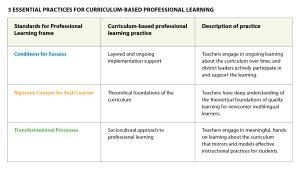
During these sessions, which are facilitated by the curriculum creators, teachers, administrators, and English learner specialists experience the curriculum, participate in interactive discussions, and practice facilitating the learning tasks that students will engage with, ensuring they are prepared to bring these lessons to life.
This heterogenous participant base allows for long-term capacity building, with district and school leaders first attending the professional learning as participants and then through the process of apprenticeship and partnership, facilitating future professional learning sessions as needed.
In recognition of the dynamism and complexity of curriculum implementation, teachers also participate in ongoing professional learning communities (PLCs) facilitated by the district’s English learner division leaders. These communities take place at the district level and are open to all educators implementing the curriculum.
The PLCs meet both in person and virtually and provide a space for teachers to dive deeper into their individual contexts of implementation. Participants discuss successes and challenges, share insights, and collaboratively problem-solve. They engage in professional readings that inform their practice and help them stay current with the latest research and methodologies in working with newcomer multilingual learners. PLCs also serve as a space for teachers to plan for future instruction, ensuring that their implementation of the curriculum is both strategic and responsive to student needs.
Rigorous Content for Each Learner: Theoretical foundations of the curriculum
The Rigorous Content for Each Learner standards describe the essential focus of the professional learning that improves outcomes for students (Learning Forward, 2022). High-quality curriculum and professional expertise connected to the curriculum are key aspects. As the Curriculum, Assessment, and Instruction standard explains, educators gain a deeper understanding of the curriculum when provided time to explore it, gauge its progression over time, and understand its alignment to student learning standards.
Educators’ understanding of the theoretical principles that underpin the curriculum is a key part of this expertise. A main principle for newcomer students — and therefore the corresponding professional learning and curriculum — is that all students deserve rigorous educational experiences, meaning there is no need to wait for newcomer students to reach a certain language ability or proficiency level before engaging with rigorous content. Instead, it is the teacher’s facilitation that provides the learning opportunities necessary for students to learn both language and content simultaneously (Walqui & van Lier, 2010).
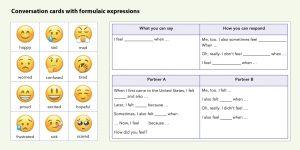
In alignment with Learning Forward’s Standards for Professional Learning, rigorous content must be provided to each learner, regardless of language proficiency level. Professional learning that emphasizes these equity-focused standards equips educators with practices to integrate complex, grade-level content with language development.
An example of this in practice can be seen within the newcomer STEM unit, where a teacher introduces a lesson on fractions by using visual models and collaborative group work. Rather than simplifying the content, the teacher scaffolds the lesson with language supports, enabling newcomer students to engage meaningfully with both the STEM concepts and the language for STEM.
This approach exemplifies how rigorous content can be implemented equitably, ensuring that students are supported with the tools to succeed in both content and language development simultaneously.
Transformational Processes: Sociocultural approach to professional learning
Standards within the Transformational Processes frame delve into the design or the “how” of professional learning, including practices and mindsets. A foundational element of the district’s newcomer curriculum, and the professional learning to support it, is the sociocultural approach to learning, which emphasizes learners engaging with content, each other, and the world around them in an interconnected way.
As part of this approach, dialogue, academic discourse, and supportive interactions are essential, as they provide opportunities for students to practice language, negotiate meaning, and build on their existing knowledge, all in the context of positive social relationships.
The newcomer curriculum is designed to maximize student talk and leverage the power of dialogic teaching, where students learn through interactive and collaborative discourse (Gibbons, 2015). In practice, this means creating classroom environments where student dialogue is a central feature, not added on as an afterthought or left to chance. Lessons within the curriculum are structured to include think-pair-share activities, group discussions, and opportunities for students to learn and use new language in context.
For example, as students are preparing to write multiparagraph personal narratives about their feelings and experiences adjusting to a new country, they engage in a series of collaborative tasks with peers that are scaffolded with language structures and practice.
Students are provided with formulaic expressions (frames to support the language of the task) to have a meaningful exchange about the topic that builds on their existing knowledge. This activity requires a dialogic exchange: One student expresses an idea (e.g., “I felt ___ when …”) and their partner must listen and then provide a response (e.g., “Me, too. I also felt …” or “Oh, really. I didn’t feel …). The figure on p. 41 shows conversation cards from the lesson that provide these language structures for students to use in discussions and later in grade-level-appropriate writing tasks.

Just as the newcomer curriculum is designed with a sociocultural approach, so is the professional learning that accompanies the curriculum. Educators participate in the learning tasks of the curriculum, discuss the tasks’ theoretical foundations, and practice facilitating the curriculum with one another, with dialogic interaction at the center.
For example, they engage in professional readings and discussions with colleagues designed to help them develop a deep understanding of the importance of talk in a classroom, even or especially for students who have not yet attained proficiency with English.
Through this model, practitioners learn through talk in the same way their students do and develop a vision for what high-quality teaching for newcomer multilingual learners looks like by engaging in collegial, pedagogical conversations. For example, after teachers have experienced a portion of the curriculum, they reflect on the relationship between pacing and purpose and consider how they may adjust pacing for their unique classroom context.
Importantly, teachers have the chance to interact with the curriculum developers, who also serve as professional learning facilitators. This allows time for curriculum designers and teachers to iterate and problem-solve together, as well as for the curriculum designers to highlight key components of the curriculum, such as the ways in which the curriculum encourages students to draw on their home languages and cultural backgrounds as they engage in meaningful classroom talk.
Impact on teacher practice
The curriculum-based professional learning has been positively received by teachers and appears to be supporting shifts in practice. In a follow-up feedback survey, educators were asked: What best supported your learning about creating quality learning opportunities for newcomer students? Responses were centered on the appreciation of hands-on learning and engaging in the tasks within the curriculum.
One teacher wrote that what supported their learning was “allowing us to ‘be the student’ and imagine what it would be like to implement this in my own classroom. I was able to see and experience the scaffolded progression and understand the importance of each step of the process.”
As part of the pre- and post-survey reflection, educators drew a quick sketch of their current vision of quality teaching for newcomer students. The presurvey sketches focused heavily on teaching vocabulary and the teacher being the center of the classroom (see figure above).
After participating in the professional learning session, the sketches drastically transformed. The post-learning sketches focused heavily on students actively engaged in rigorous instruction through academic discourse, and the teacher moved into the role of facilitator, guiding students, and providing scaffolds that support students’ language and content development.
For example, one teacher’s post-reflection noted, “In my vision of quality teaching for English learners, the teacher (is) engaging the students in meaningful activities that promote discourse and engagement. They are guiding and supporting students through tasks that grow in complexity” (see figure above).
As teachers continue to learn about and implement the newcomer curriculum units, we see that they are actively engaged in developing expertise and offering high-quality learning opportunities to their newcomer students. The district’s comprehensive support system — from experiential, interactive professional learning sessions to ongoing PLCs — ensures that these educators are well-prepared and continuously supported.
This commitment to teacher expertise and professional growth reaffirms the district’s dedication to educational equity and excellence and can ultimately translate into rigorous and meaningful learning opportunities for all students.
Download pdf here.
References
Davis, E.A., Palincsar, A.S., Smith, P.S., Arias, A.M., & Kademian, S.M. (2017). Educative curriculum materials: Uptake, impact, and implications for research and design. Educational Researcher, 46(6), 293-304.
Gibbons, P. (2015). Scaffolding language, scaffolding learning: Teaching English language learners in the mainstream classroom. Heinemann.
Learning Forward. (2018). High-quality curricula and team-based professional learning: A perfect partnership for equity. Author.
Learning Forward. (2022). Standards for Professional Learning. Author.
Shulman, L.S. (1987). Knowledge and teaching: Foundations of the new reforms. Harvard Educational Review, 57(1), 1-22.
Walqui, A. & van Lier, L. (2010). Scaffolding the academic success of adolescent English language learners: A pedagogy of promise. WestEd.
Recent Issues
LEARNING DESIGNS
February 2025
How we learn influences what we learn. This issue shares essential...
BUILDING BRIDGES
December 2024
Students benefit when educators bridge the continuum of professional...
CURRICULUM-BASED PROFESSIONAL LEARNING
October 2024
High-quality curriculum requires skilled educators to put it into...
LEARNING TO PIVOT
August 2024
Sometimes new information and situations call for major change. This issue...




